
In some ways, I’d like to be able to tell you that the Melco N50-S38 Music Library made no audible difference in my system because that would be simpler than the truth.
The Melco N50-S38 Music Library is an interesting device seeing as it can perform a number of different functions which turn it into more than network attached storage. These other options include having the N50-S38 also act as a single port network switch and/or a Roon Endpoint and USB-equipped network player, sending the digital bits out to your USB DAC of choice. To clarify, these additional functions are optional in that they are there, ready and waiting, if you choose to use them. Otherwise, the N50-S38 can live up to its name as a Music Library.

The N50-S38 comes with an internal 4TB Solid State Drive (SSD) which is where your music library resides. If that’s not enough space, you can hang additional USB storage off of the back panel’s USB “Expansion” port. There are three more USB ports adjacent to the Expansion port, one for connecting a CD drive for ripping CDs directly to the Melco’s internal storage marked “USB 3.0,” another labelled “Backup” which is self explanatory, and a third USB port to connect to a “USD DAC”. Finishing up the connectivity options are a pair of Ethernet ports, one for connecting the N50-S38 to your network, and the other for connecting your network player/streamer or streaming DAC/amp to the Melco.
The Melco N50-S38 does not run Roon Core, so Roon users need to house Roon Core somewhere else on the same network. I use a Small Green Computer sonicTransporter i5 (gen 3), which has been in 24/7 use for years, and has proven to be as dependable as shadows in afternoon sun.
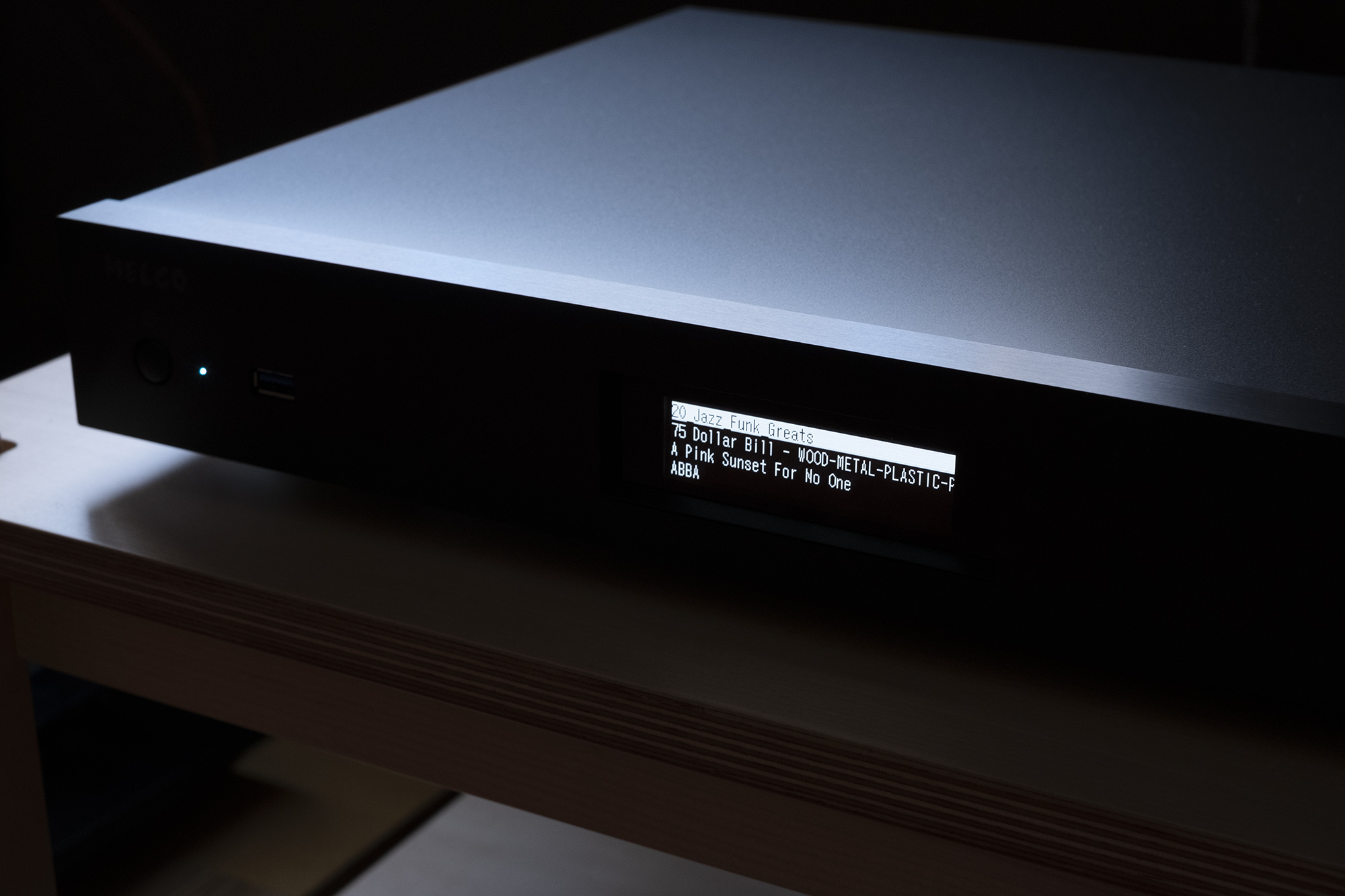
Melco (Maki Engineering Laboratory Company) Audio was founded in Japan in 1975 by Makoto Maki and the company’s first product was the renowned Melco Turntable. After a number of years, Makoto Maki shifted his focus to networking products including Wireless routers, Ethernet Data Switches, and network attached storage (NAS) devices. This focus became Buffalo Inc., a subsidiary of Melco Holdings, Inc. Melco Audio inherited its networking DNA from Buffalo, giving the audio company a solid foundation to leverage in their audio-related networking products.
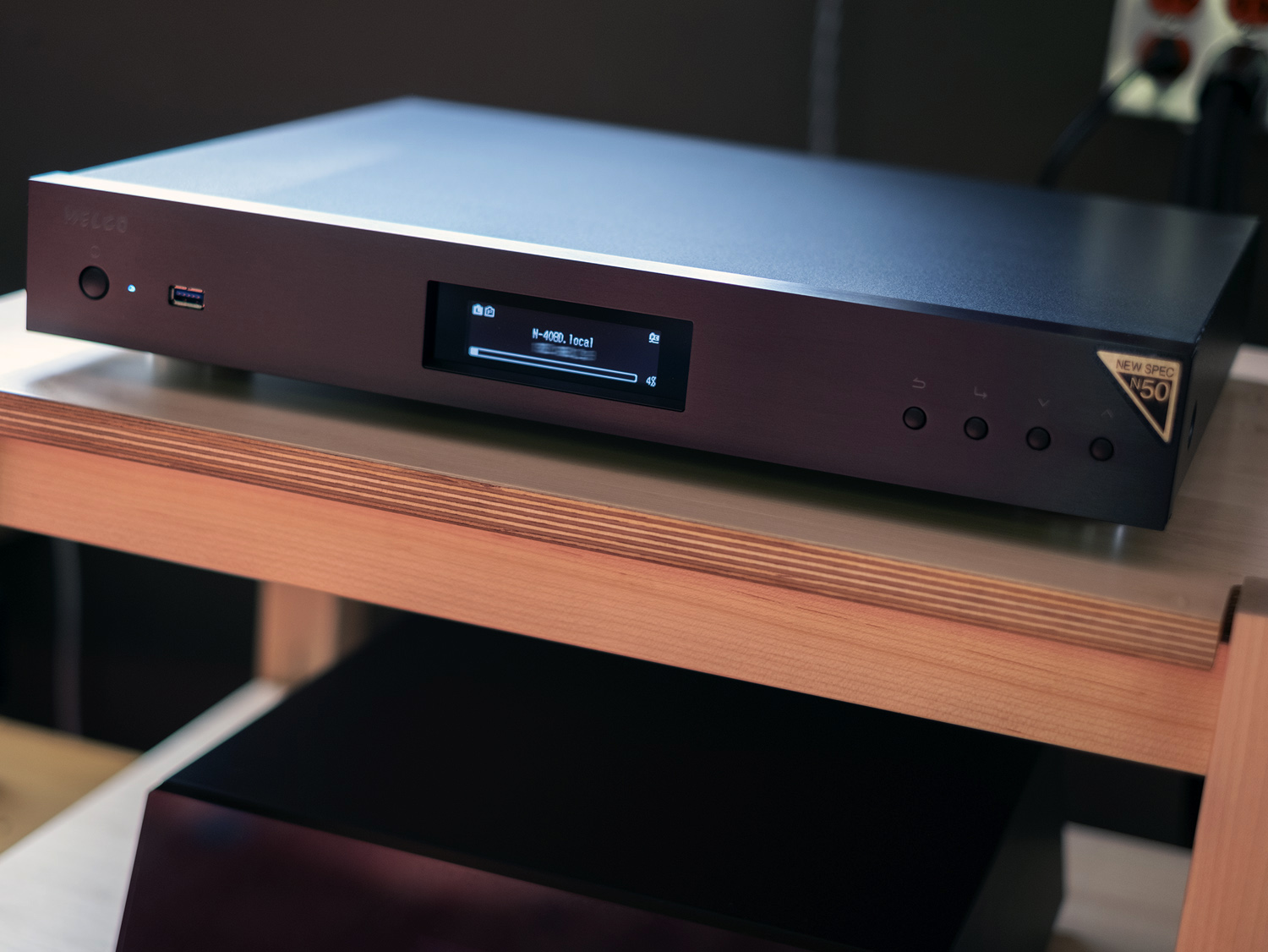
The N50-S38 is, as you can see, a full-width component measuring 17” wide, 14” deep, and a slender 3” high. The case is made from 1.7mm thick aluminum and sports a thicker aluminum faceplate. The chassis and faceplate are available in silver or black. The N50-S38’s front panel houses an on/off switch, another USB port to connect a USB hard drive or optical drive for music playback, a display, and four control buttons to navigate the setup and function menus. The N50-S38 sits on Melco-designed isolation feet. As a package, the N50-S8 looks like a nicely made hifi component, nicely camouflaging its more utilitarian functions. My only quibble is the the 1.7mm thick aluminum chassis rings a bit hollow when tapped, so I’d be tempted to add some damping material inside, but that’s just my OCD talking.
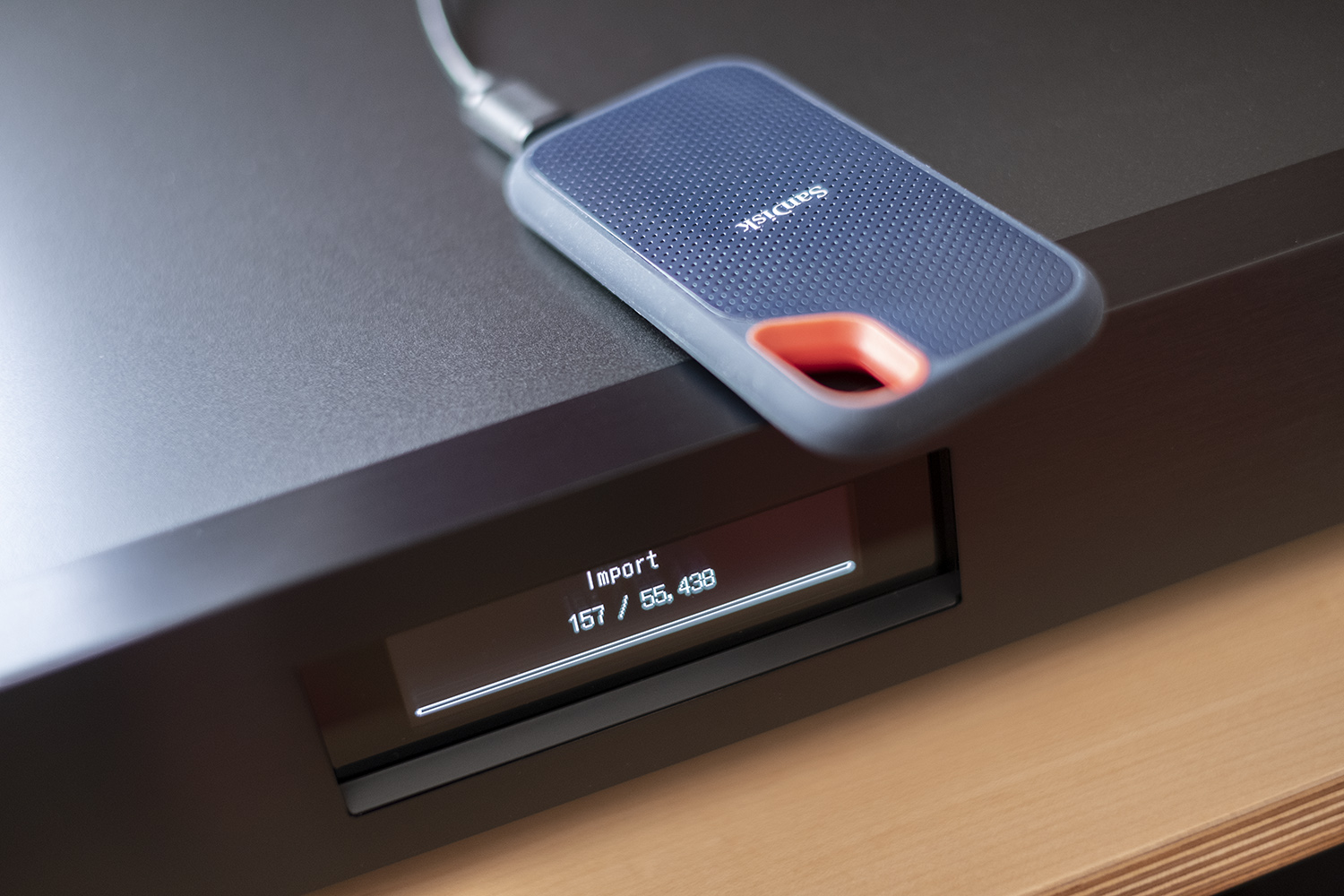
I transferred roughly 1TB of music onto the Melco’s internal drive using an external Scandisk USB SSD drive where I keep a backup of my music library. I should mention that being a network device, the N50-S38 gets its very own IP address on your network making it easily accessible from any network-attached computer, phone or tablet.

Melco offers the free Melco Music HD app, only available for iPads. You can use the Melco app to play music from the N50’s internal storage and from Tidal and Qobuz when set for UPnP mode using the front panel navigation buttons. The same menu tree leads to the option of making the Melco a Roon Endpoint. If you want to dig into the full N50-38S feature set, please refer to the Melco manual.
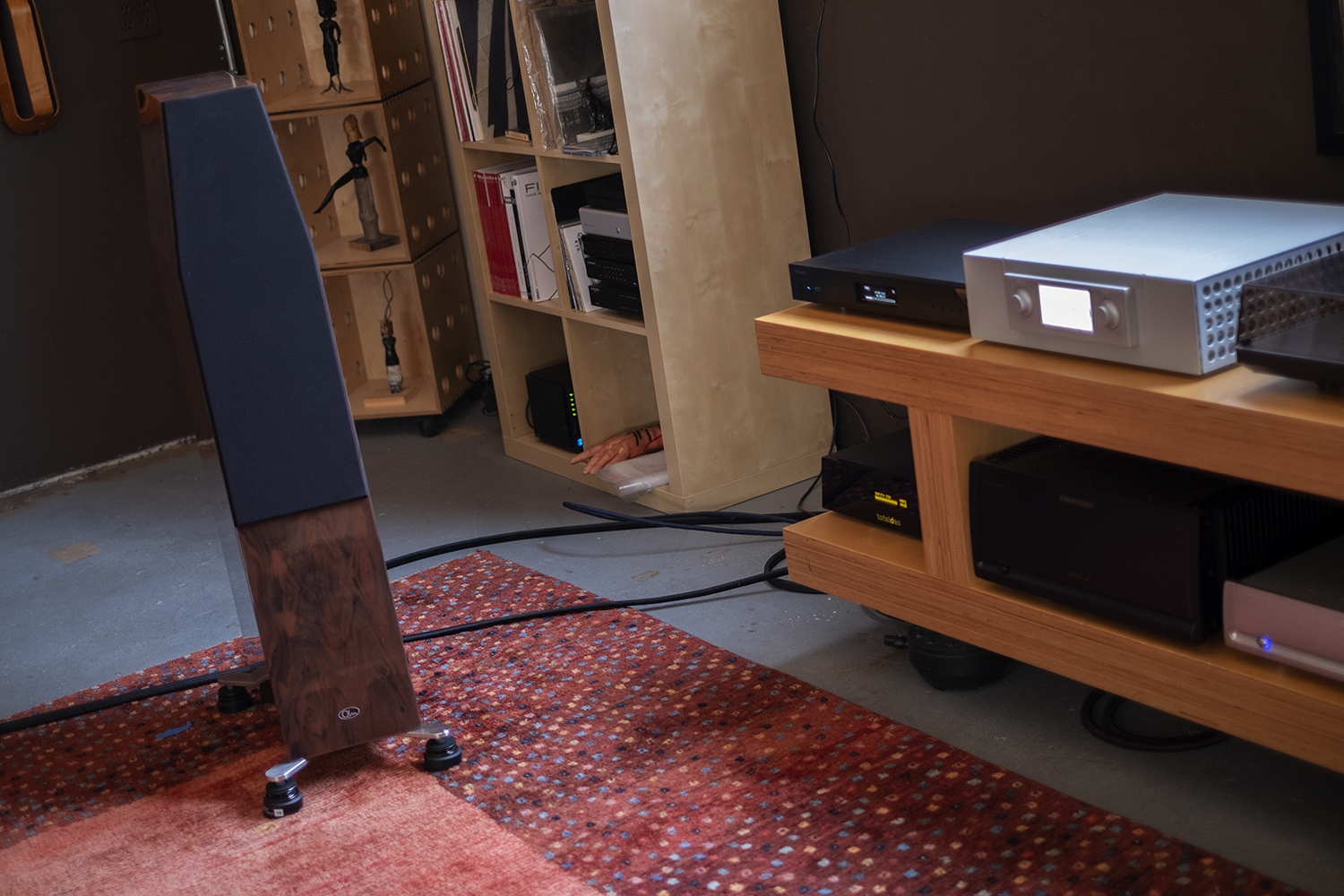
The main system in use during my Melco evaluation was comprised of the Qln Prestige Five Loudspeakers driven by the Constellation Inspiration Integrated 1.0 (review) and the totaldac d1-tube DAC/Streamer (review). All cabling was from AudioQuest, including their new and impressive Thunderbird interconnects. My music library resides on a Synology DS412+ NAS.
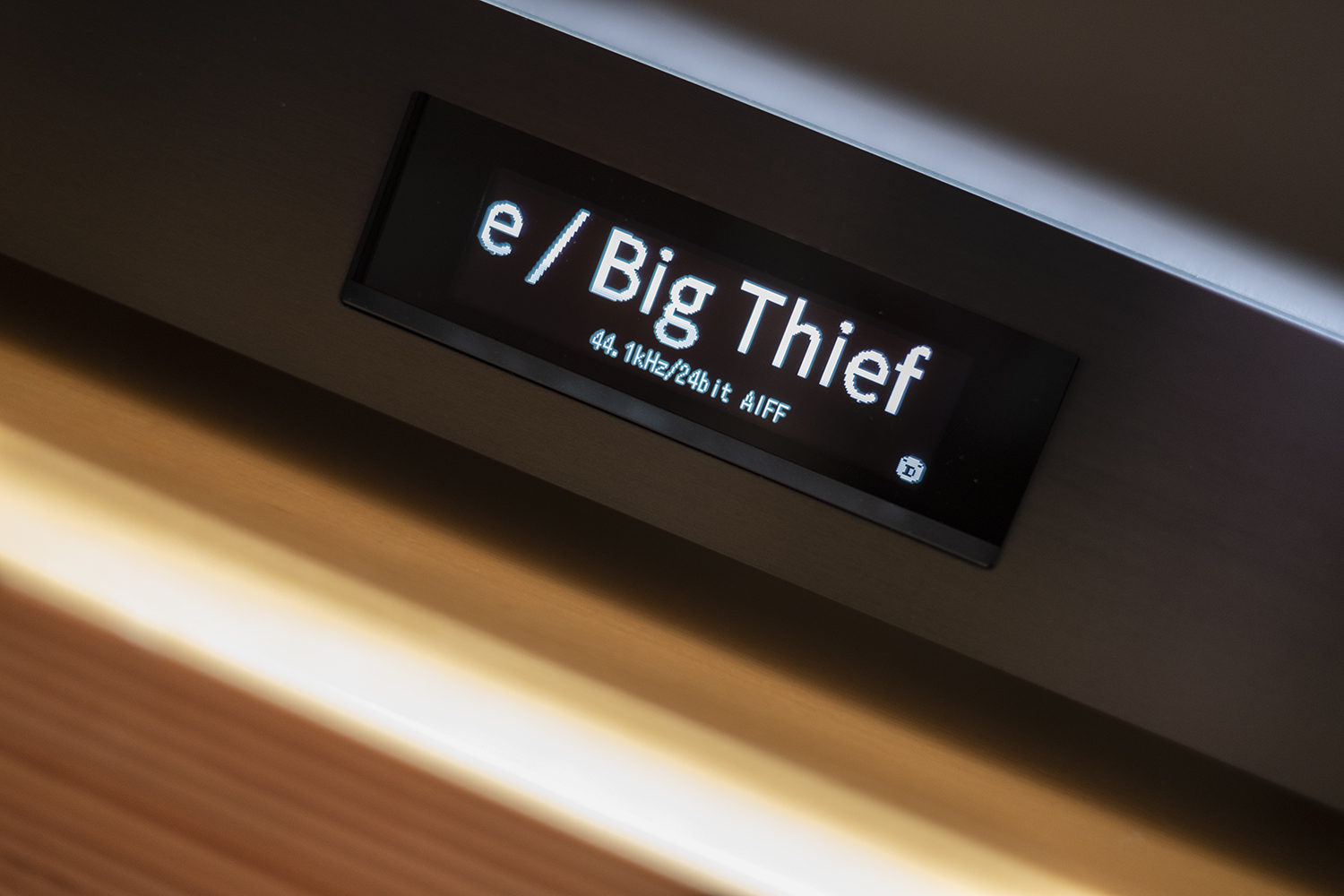
Let’s get right to it—using the Melco’s USB DAC output into the totaldac’s USB input made it very clear that I preferred the network connection. Of course any comments about sound quality and preference relating to USB versus Ethernet have as much to do with the totaldac’s USB and network implementations, so even though I hate to say it, your mileage may vary. In my experience, the totaldac’s AES input is the way to go for the best performance in terms of sound quality.
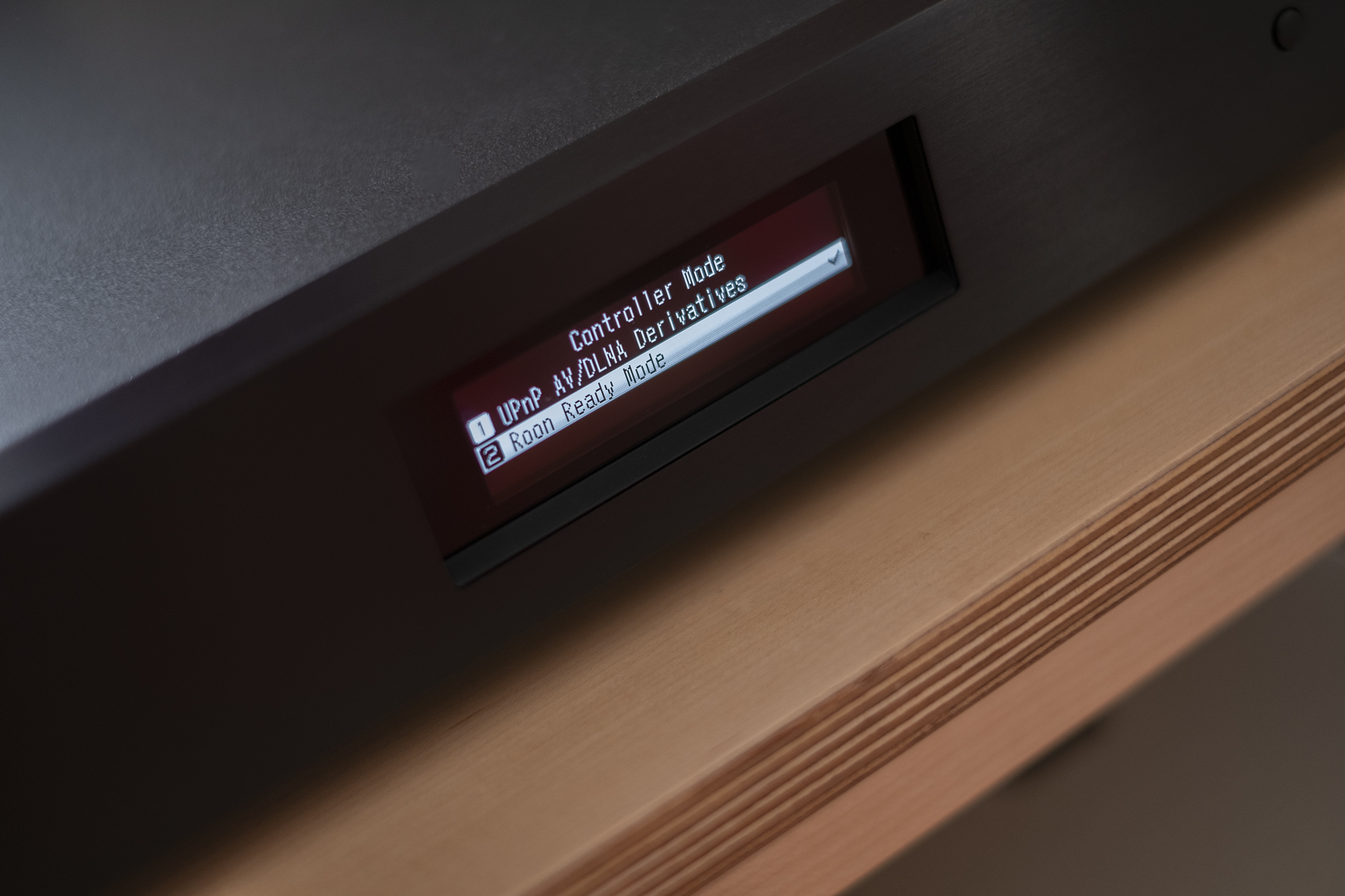
I also greatly preferred using Roon to control playback, but that should come as no surprise to regular readers or Roon users. While Melco’s own app for the iPad is workable, having separate interfaces for stored music and streaming services just doesn’t work for me these days. I prefer a fluid blend of both, which Roon provides along with the ability to let Roon Radio pick the music from stored music, Tidal, and Qobuz. This has led me to discover tons of music that’s new to me, something I value almost as much as sound quality.
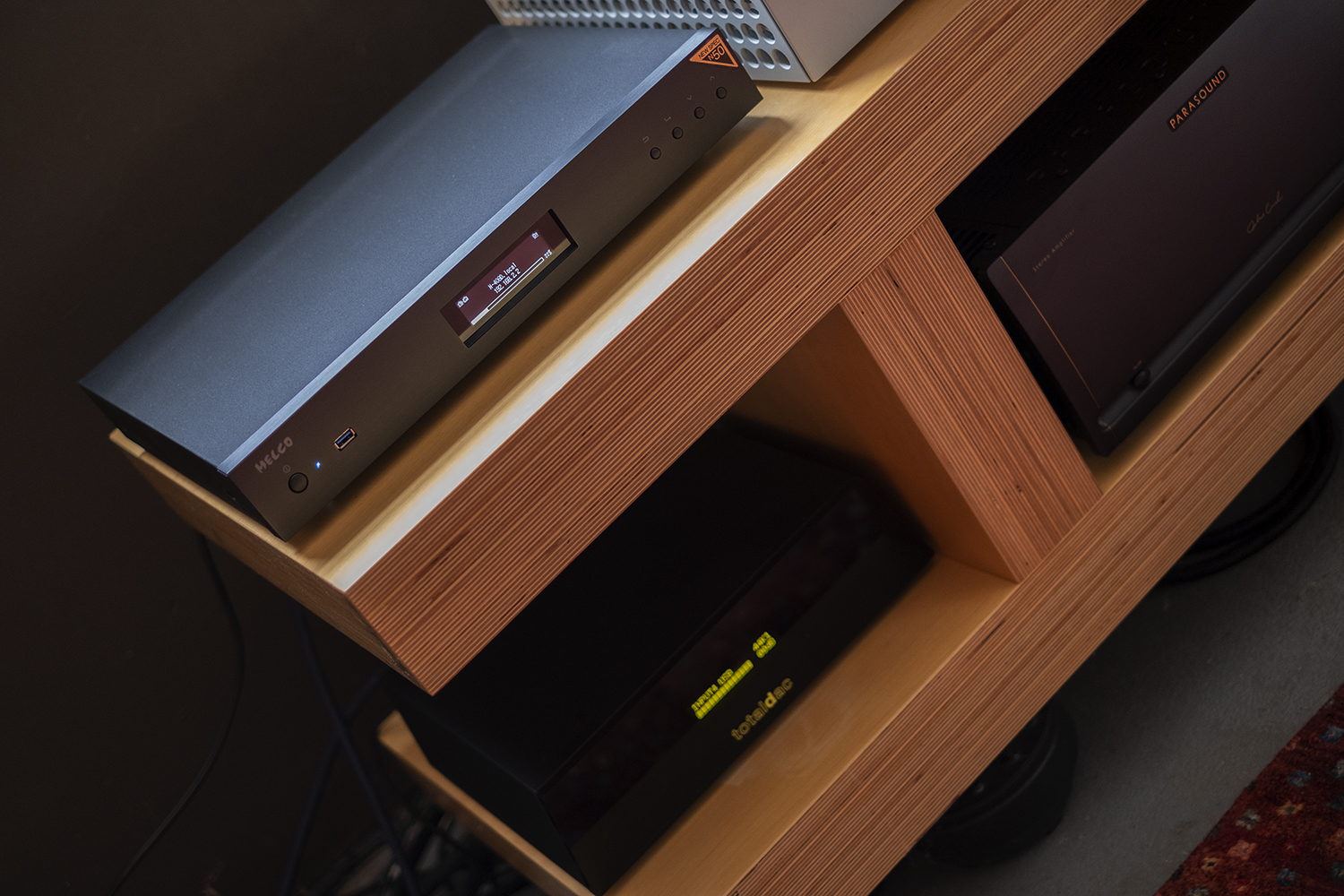
Where the Melco N50-S38 shone in Barn, and it shone so very brightly, was using it as NAS and network player, feeding the totaldac’s Ethernet input while using Roon to control playback. I have to admit I didn’t expect a heck of big difference between using my Synology NAS and the Melco, but when also using the N50-S38’s LAN Ethernet output, there was a noticeable improvement in the sound of my music. The most apparent change was greater clarity—with the Melco in control of serving and streaming music to the totaldac, music sounded as if a very thorough digital janitor had gone into my system and cleared out a bunch of haze, making the finer points of reproduction appear as if painted with a finer brush.
King Hannah’s “A Well-Made Woman” opens in fits and starts with acoustic guitar, then drums, then Hannah Merrick’s angular vocals and these parts are portrayed in a large space, spaced out from one another with plenty of air in between. When the electronic effects, bass, and crunchy electric guitar join in, the result is akin to watching a menacing movie unfold. With the Melco in charge, each element was presented with greater distinction and clarity in space and in relation to one another, making this dangerous sounding music feel even more threatening. Moving back to feeding the totaldac from my TRENDnet 8-Port Gigabit GREENnet Switch, and all of these elements sounded less apart, more blurred and less distinct. Not a direction I want to go.
These same improvements were apparent regardless of the music in play. Another result of this increased clarity was the sense that reproduction was more refined, more effortless, and was able to spread out around the Barn with greater ease. If this sounds like a dramatic change, it was and wasn’t, depending on your point of view. To put things in perspective, changing loudspeakers offers the greatest possible change in sound quality from a hifi system. Moving from a tiny bookshelf to a large floorstanding speaker can deliver a magnitude of change that no other component, cable, power product, or network device can match. I know some of you may be thinking, “Yes but, what about….” and my answer remains unchanged.
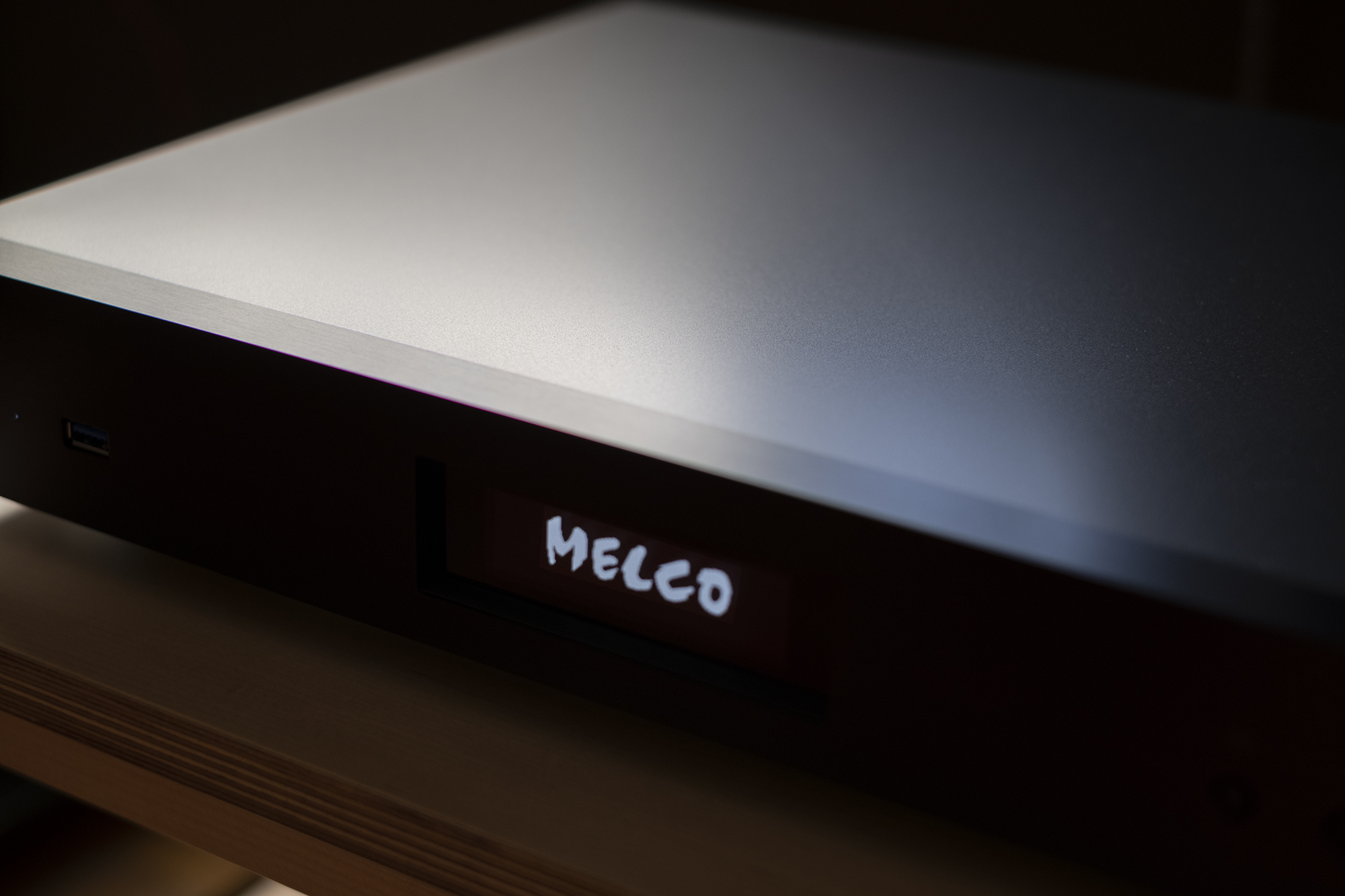
Let’s also say a hifi can improve on a scale from 1 to 100. In my experience, only loudspeakers can approach the top end of the scale, with everything else falling somewhere further down that road, with something like a new USB cable living in the 1 to maybe 8 range, all things considered and room aside. The sonic improvements offered by the Melco, as compared to using my Synology NAS and TRENDnet switch to perform the same functions, clocks in at a solid 10. When I’m listening to music while doing nothing else, where music has my complete attention for hours on end, a solid 10 in terms of an improvement is significant. Significant because I can get closer to the music, with less of a barrier of the mechanics of reproduction in between. In other words, an important and positive change.

If you were to sit in my Red chair and play with all of these same pieces and make the same comparisons using rapid A/B ‘tests’, I can almost guarantee your measure of the changes offered by the Melco will hardly show up on that 1 to 100 scale. If you are skeptical that the N50-S38 can make any difference in the sound quality of a system, or worse still you are certain! that it can’t, you will effectively be deaf to any change in sound quality. Bias cuts both ways.
If I was a carpenter by trade, the quality of my tools would matter more to me than to the casual home improvement DIY’er. I know this for a fact because my grandfather was a carpenter by trade and one thing you did not do was mess with his tools because they were honed to a level of performance that he not only appreciated, but depended upon to get his work done to the degree of quality he demanded from himself. No joke. If someone snuck into the Barn and replaced my coping saw’s blade with a slightly duller one, I’d never notice largely because I don’t use a coping saw.
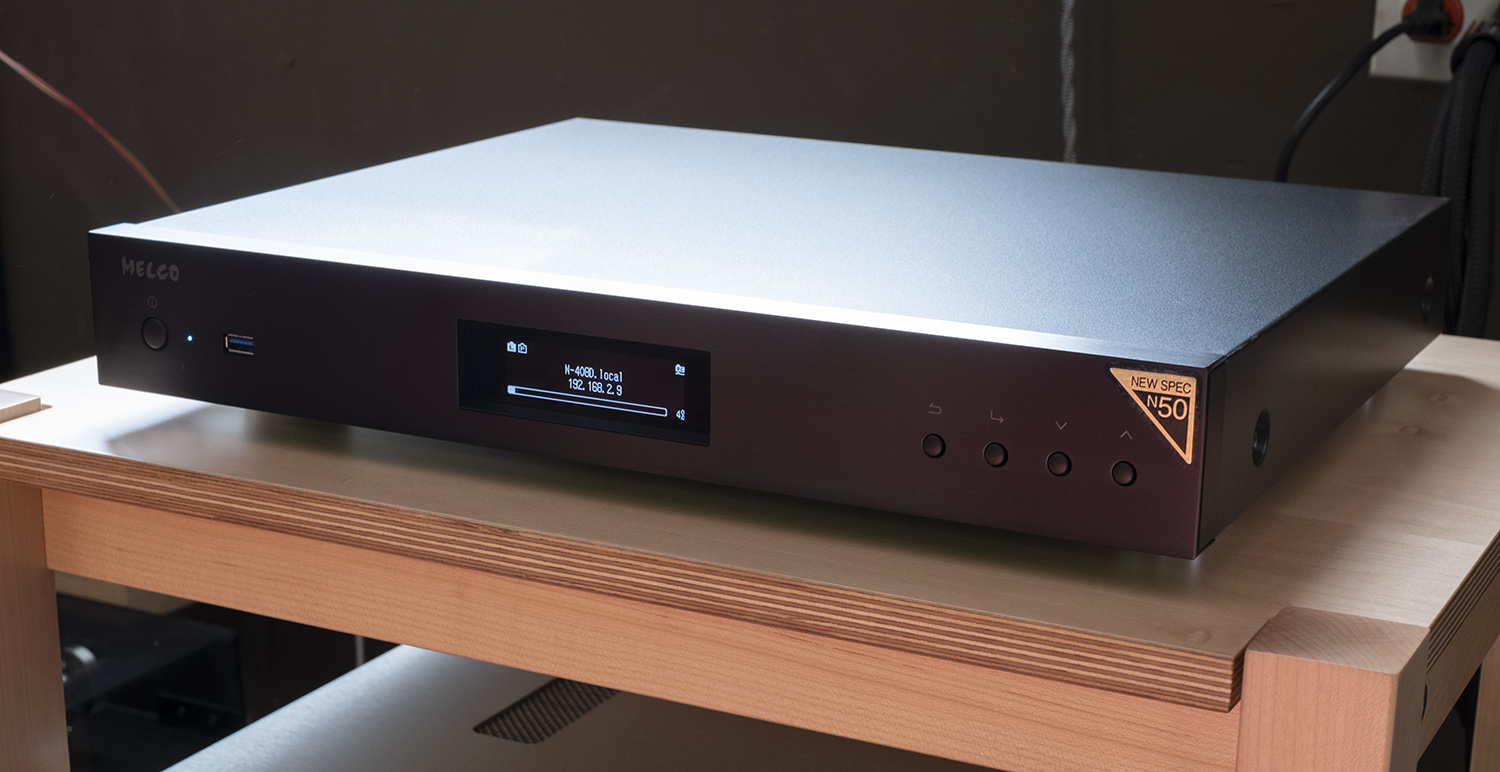
The Melco N50-S38 offered clear and musically significant improvements when used in my system. While hifi and networking specifics will certainly determine the degree to which the Melco will impact other systems in other rooms, if you are done with more important parts of system building and want to work on upping your system’s performance game, the Melco is one solution worth exploring.
Melco N50-S38 Music Library
Price: $5499
Company Website: Melco Audio
Specifications
Music storage
1 x specially selected SSD
Network connectivity
LAN Port-Gigabit Ethernet (1000Base-T),
PLAYER port,
Gigabit Ethernet (1000Base-T),
DHCP server in isolated mode
USB connectivity
USB2.0 port USB-DAC dedicated,
USB3.0 backup port,
USB3.0 expansion port,
USB3.0 port for music import & CD drive
USB3.0 front panel port for import & DAC
USB player file support DSF, DFF, FLAC, WAV, ALAC, AIFF, AAC
USB player sample rate support
16-32 bit (PCM) to 384kHz:- auto downsample to suit connected DAC.
Gapless PCM supported.
1 bit (DSD) to 11.3MHz Quad DSD.
Markerless DSD supported.
DSD to 32bit PCM conversion selectable.
Gapless DSD supported.
OLED displays player sample rate.
Power supply
100-120VAC, 220-240VAC
Size
436 x 62 x 352mm
Weight
7kg

